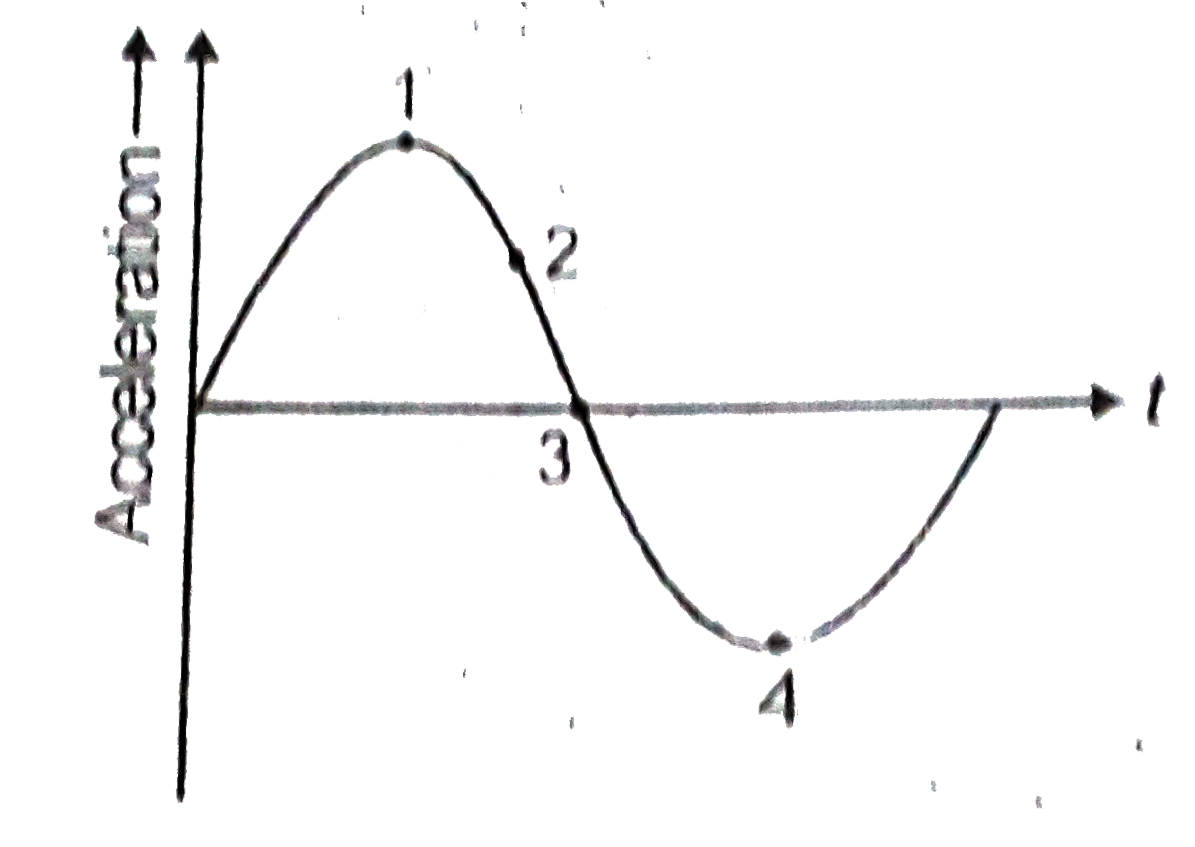At which point of projectile motion (i) potential energy is maxumum (ii0 kinetec eneragy is maximum (iii) total vechnical energy is maximum.
To solve the question regarding the points in projectile motion where potential energy, kinetic energy, and total mechanical energy are maximum, we can break it down step by step.
Step 1: Maximum Potential Energy
- In projectile motion, potential energy (PE) is given by the formula:
PE=mgh
where m is the mass, g is the acceleration due to gravity, and h is the height.
- The potential energy is maximum at the highest point of the projectile's trajectory. At this point, the height h is at its maximum.
- Therefore, the maximum potential energy occurs at the highest point of the projectile's motion.
Step 2: Maximum Kinetic Energy
- Kinetic energy (KE) is given by the formula:
KE=12mv2
where v is the velocity of the projectile.
- The kinetic energy is maximum at the points where the velocity is maximum. This occurs at the initial point (just after launch) and the point just before it strikes the ground.
- At these points, the projectile has its maximum speed u (initial speed) and thus maximum kinetic energy.
- Therefore, the maximum kinetic energy occurs at the initial point and just before striking the ground.
Step 3: Total Mechanical Energy
- Total mechanical energy (TME) is the sum of kinetic energy and potential energy:
TME=KE+PE
- In the absence of air resistance and external forces, the total mechanical energy remains constant throughout the motion.
- Therefore, the total mechanical energy is maximum at all points in the motion since it does not change.
- Thus, the total mechanical energy is constant and can be considered maximum at all points in the projectile's motion.
Summary of Answers:
1. Maximum Potential Energy: At the highest point of the projectile's motion.
2. Maximum Kinetic Energy: At the initial point and just before striking the ground.
3. Total Mechanical Energy: Constant and maximum at all points during the motion.
- In projectile motion, potential energy (PE) is given by the formula:
PE=mgh
where m is the mass, g is the acceleration due to gravity, and h is the height.
- The potential energy is maximum at the highest point of the projectile's trajectory. At this point, the height h is at its maximum.
- Therefore, the maximum potential energy occurs at the highest point of the projectile's motion.
- Kinetic energy (KE) is given by the formula:
KE=12mv2
where v is the velocity of the projectile.
- The kinetic energy is maximum at the points where the velocity is maximum. This occurs at the initial point (just after launch) and the point just before it strikes the ground.
- At these points, the projectile has its maximum speed u (initial speed) and thus maximum kinetic energy.
- Therefore, the maximum kinetic energy occurs at the initial point and just before striking the ground.
- Total mechanical energy (TME) is the sum of kinetic energy and potential energy:
TME=KE+PE
- In the absence of air resistance and external forces, the total mechanical energy remains constant throughout the motion.
- Therefore, the total mechanical energy is maximum at all points in the motion since it does not change.
- Thus, the total mechanical energy is constant and can be considered maximum at all points in the projectile's motion.
1. Maximum Potential Energy: At the highest point of the projectile's motion.
2. Maximum Kinetic Energy: At the initial point and just before striking the ground.
3. Total Mechanical Energy: Constant and maximum at all points during the motion.
Topper's Solved these Questions
- BOOK - PRADEEPCHAPTER - KINEMATICSEXERCISE - 5 Short answer6videos
KINEMATICS
- BOOK - PRADEEPCHAPTER - KINEMATICSEXERCISE - 6 Short answer8videos
KINEMATICS
- BOOK - PRADEEPCHAPTER - KINEMATICSEXERCISE - 3 Short answer37videos
KINEMATICS
- BOOK - PRADEEPCHAPTER - GRAVIATIONEXERCISE - Assertion-Reason Type Questions19videos
GRAVIATION
- BOOK - PRADEEPCHAPTER - LAWS OF MOTIONEXERCISE - Assertion- Reason Type Questions17videos
LAWS OF MOTION
Similar Questions
At which point on the projectile trajectory is the (ii) kinetic energy minimum.
View SolutionThe acceleration- time graph of a particle executing SHM along x-axis is shown in figure. Match Column-I with column-II

Column-IColumn-IIPosition of particlePhysical,quantites related with particle's motion(A)At position 1 (p)Kinetic energy is maximum(B)At position 2 qPotential energy is maximum(C)At position 3(r)Displacement of particle is negative(D)At position 4(s)Velocity is maximumView Solution
Knowledge Check
- Question 1 - Select One
The gravitational potential energy is maximum at :
AinfinityBthe earth's surfaceCThe centre of the earthDTwice the radius of the earth - Question 2 - Select One
Potential energy of the bob is maximum
Aat the mean positionBat the extreme positionsCbetween the mean position and extreme positionsDnone of these - Question 3 - Select One
In a simple harmonic motion
(i) the maximum potential energy equal the maximum kinetic energy
(ii) the minimum potential energy equals the minimum kinetic energy
(iii) the minimum potential energy equals the maximum kinetic energy
(iv) the maximum potential energy equals the minimum kinetic energyA(i),(ii)B(i),(iii)C(ii),(iii)D(i), (iv)
A particle executing SHM has potential energy U0sin2ωt. The maximum kinetic energy and total energy respectively are
View SolutionAt which position the potential energy of a harmonic oscillator is maximum or minimum ?
View SolutionA projectile is fired with kinetic energy 1 kj. If its range is maximum, what will be its kinetic energy at the highest point of its trajectory ?
View SolutionIn simple harmonic motion of a particle, maximum kinetic energy is 40 J and maximum potential energy is 60 J. then
View SolutionIn SHM at the equilibrium position
(i) displacement is minimum
(ii) acceleration is zero
(iii) velocity is maximum
(iv) potential energy is maximumView Solution

